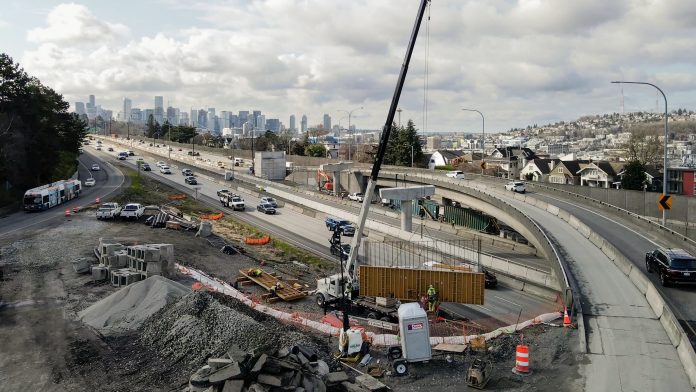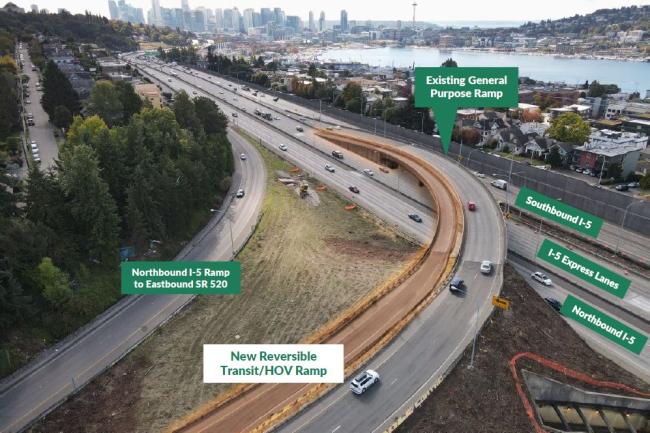The Washington State Department of Transportation (WSDOT) has announced that it no longer plans to open a direct access ramp for buses between the I-5 express lanes and State Route 520 this year as originally planned, punting its grand opening until after the next major phase of the 520 bridge replacement project. That means bus riders between central Seattle and parts of the Eastside will continue to sit in general purpose traffic until 2030, with a possibility of an earlier grand opening if construction goes smoothly.
The Urbanist first covered the ramp in 2021, noting its significant potential to improve travel times for riders.
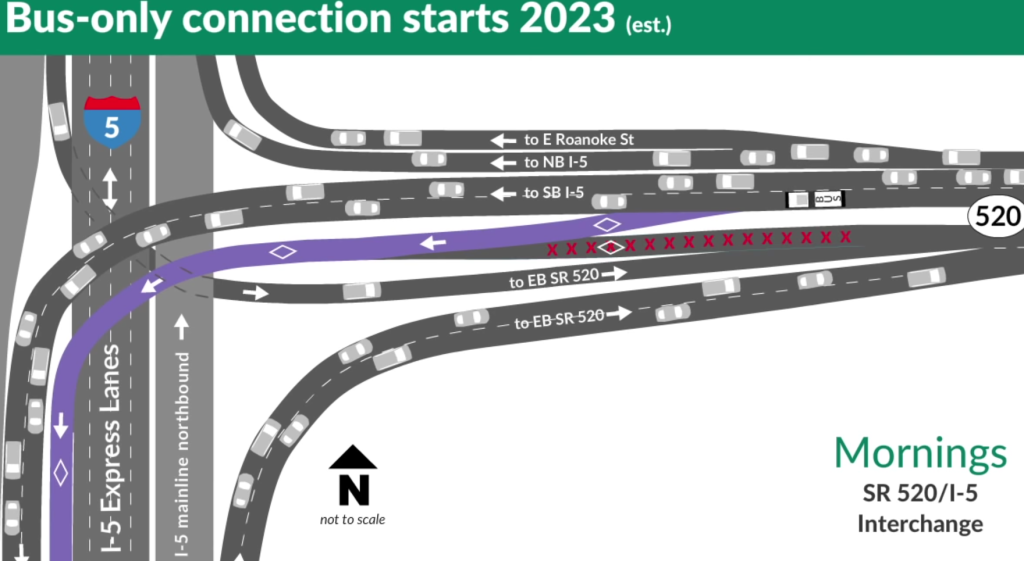
The new reversible lane, which will be run in the same direction as the I-5 express lanes, was originally set to open to buses only in 2023, per an agreement signed in 2021 between WSDOT, Sound Transit, King County Metro, and the Seattle Department of Transportation. But even though WSDOT’s project website still touts the benefits of accelerating the project’s timeline from 2029 to 2023, what was downplayed was the fact that the ramp would always need to close for construction of the new Portage Bay Bridge and Roanoke Lid project in 2024. Once the new bridge and north Capitol Hill highway lid are complete, the ramp will open to all high-occupancy vehicles (HOVs), including buses and carpools.
Now, because of delays impacting the connection’s construction, including the concrete strike of 2022 and the discovery of construction flaws in highway pier caps last year, the ramp wouldn’t be ready to carry buses until sometime next year — mere months from when it would need to close again.
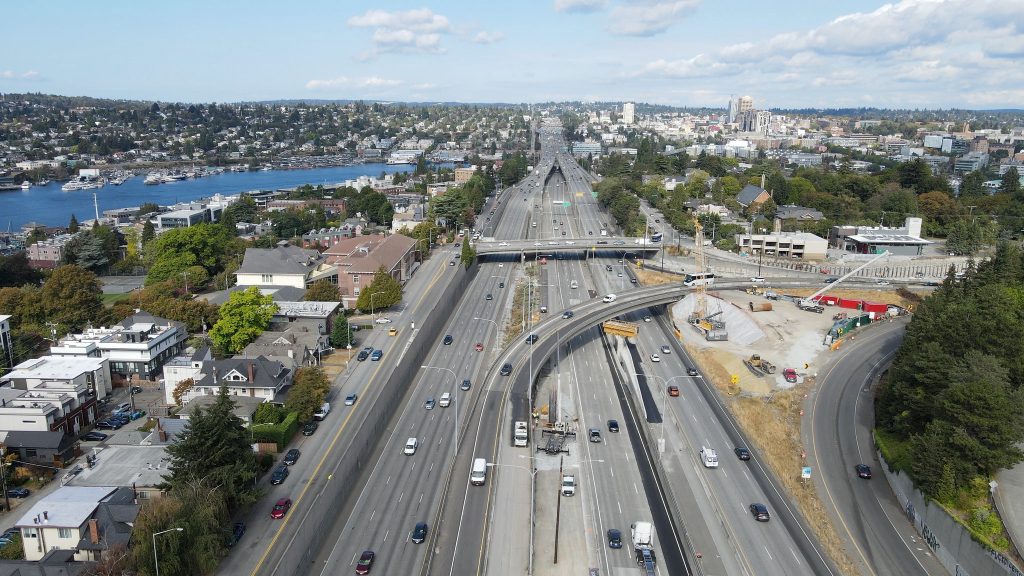
Then there’s the issue of which buses would be able to use the new connection. A 2023 opening was originally timed to coincide with the opening of Sound Transit’s East Link and the planned reconfiguration of multiple bus routes between Seattle and the Eastside to take advantage of new connections to the 10 new light rail stations. With East Link construction delays, 2025 is set to be the earliest bus routes connecting to those new stations would change configurations and the timelines stopped being able to converge.
“So with East Link not on track and on schedule, there wouldn’t be the buses and the service that could all of a sudden switch to support the transit services once the ramps opened, until 2025…and so essentially, we started to have an overlap,” Dawn Yankauskas, the Deputy Program Administrator for the SR 520 program told The Urbanist. “And then if we did open it up for a very short period of time, there wouldn’t be transit services to actually use the route.”
Currently, no buses connect directly from SR 520 to I-5’s Mercer Street exit, the pathway envisioned for this new ramp. King County Metro’s future Route 256 bus, planned in conjunction with East Link, would be the first bus to use this connection, directly running from Woodinville to South Lake Union with stops in Kirkland and Medina during peak commuting hours only, in one direction only.
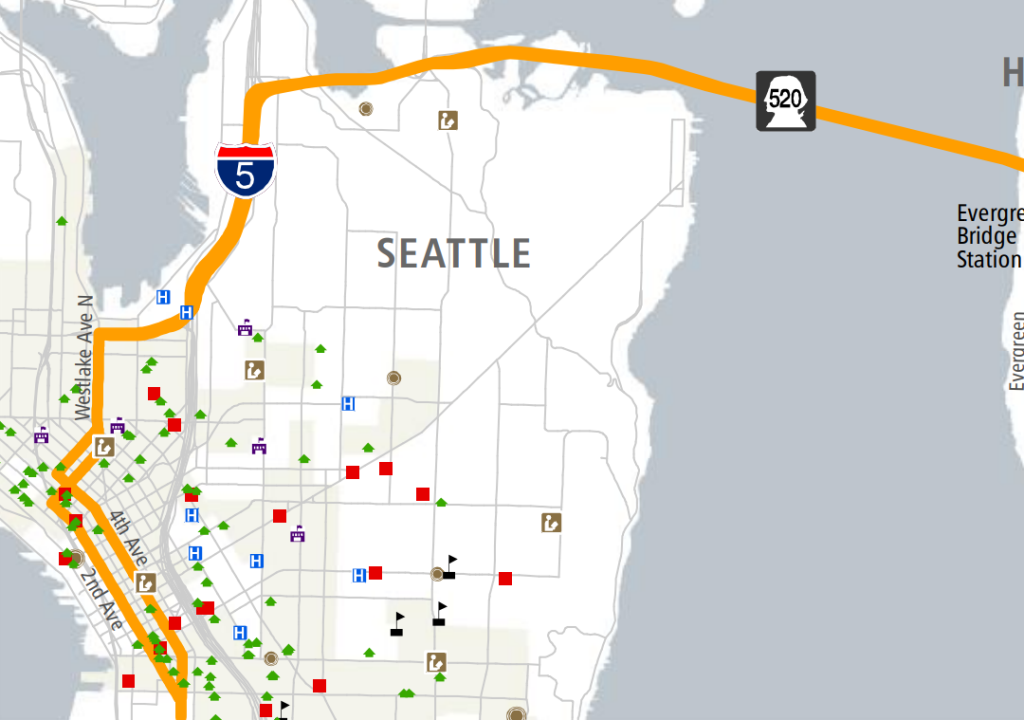
Any bus that will eventually use the Mercer Street on and off ramps will be able to take advantage of a new reversible ramp onto I-5 from there, since that ramp will not have to close to accommodate Portage Bay Bridge construction. So far, only the Route 256 looks poised to take advantage of this, with Sound Transit’s planned 544 bus, a peak-hour connection between Redmond and Downtown Seattle, set to continue using downtown ramps instead — even though the route will also serve South Lake Union.
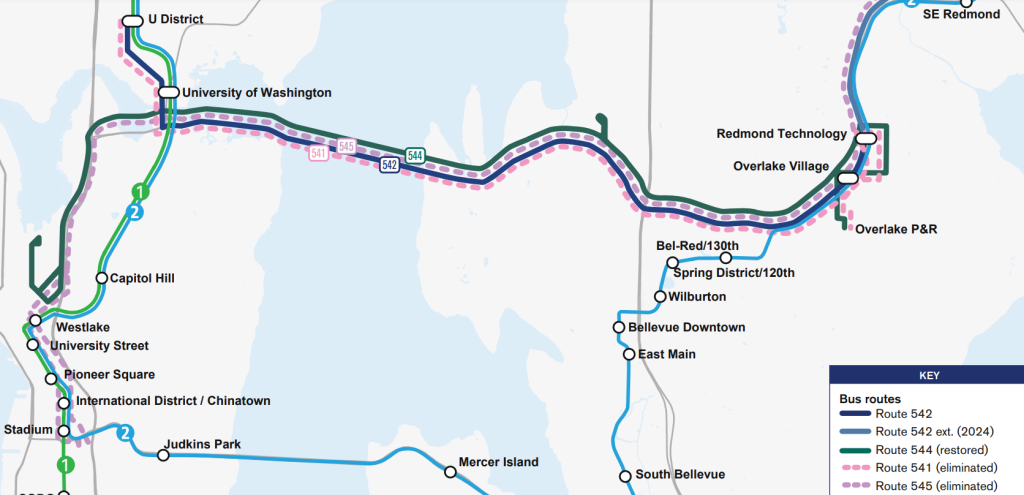
But whether additional buses could have taken advantage of the new pathway, especially if congestion started bogging down other pathways, is moot since the connection is now not set to open until the end of the decade. In a statement, WSDOT framed the delay as an overall advantage, downplaying the potential impact on transit riders.
“Postponing the ramp opening to 2030 has several advantages. First, it allows for more streamlined project delivery across transit agencies and avoids confusion about when the ramp is open or closed,” the statement noted. “Second, it provides more space and improved access for the Portage Bay Bridge contractor to build a landscaped lid over SR 520 between 10th Avenue East and Delmar Drive East in Seattle. Third, it could potentially accelerate Portage Bay project construction and allow WSDOT to open the reversible I-5 ramp connection sooner than 2030.”
There are some glimmers of hope on the horizon for SR 520 bus riders, though. The new Montlake highway lid, set to be complete early next year, will recreate the direct transit connection that was lost when the Montlake Flyer Station closed in 2019, forcing all transfers to happen in Montlake Triangle near the University of Washington light rail station. That new transit hub will take advantage of direct HOV ramps onto SR 520, getting buses out of general purpose traffic much sooner.
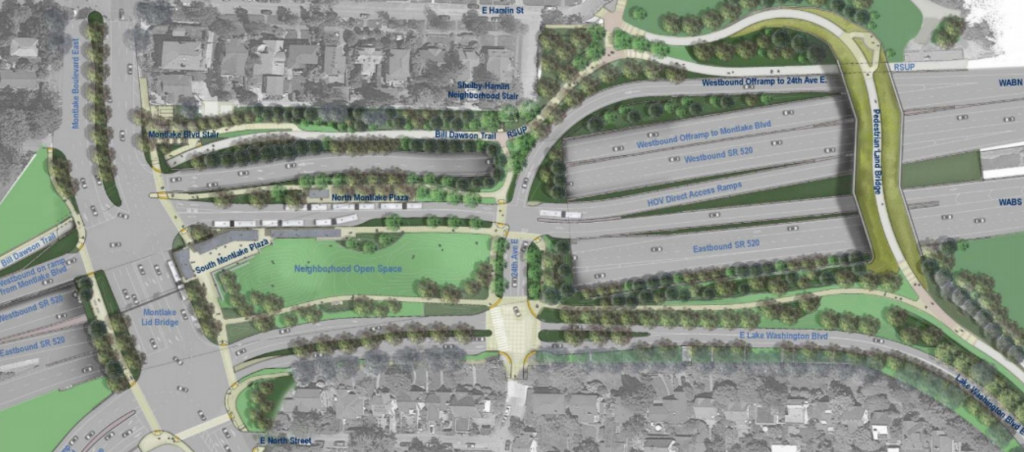
Unfortunately, city streets aren’t poised to take full advantage of these new connections by providing transit priority of their own. The Route 48, the most frequent local connection to the Montlake lid transit hub, will not see dedicated bus lanes anywhere near Montlake as part of an upgrade moving forward right now, though they remain on the table. The new nine-lane Montlake Boulevard won’t include transit lanes through the corridor, a big missed opportunity that will ultimately lead to buses getting stuck in traffic, particularly during events at Husky Stadium.
Other local streets like NE Pacific Street also lack transit priority, a fact that became fully evident through the recent closure of Montlake Boulevard. In 2021, when a similar SR 520-related construction closure led to buses stuck in gridlock, the Seattle Department of Transportation (SDOT) painted bus lanes on Campus Parkway that remain in place until today. With the Montlake area becoming one of the most heavily used transit hubs in the city, Seattle would gain a lot by being more proactive about moving buses through the area.
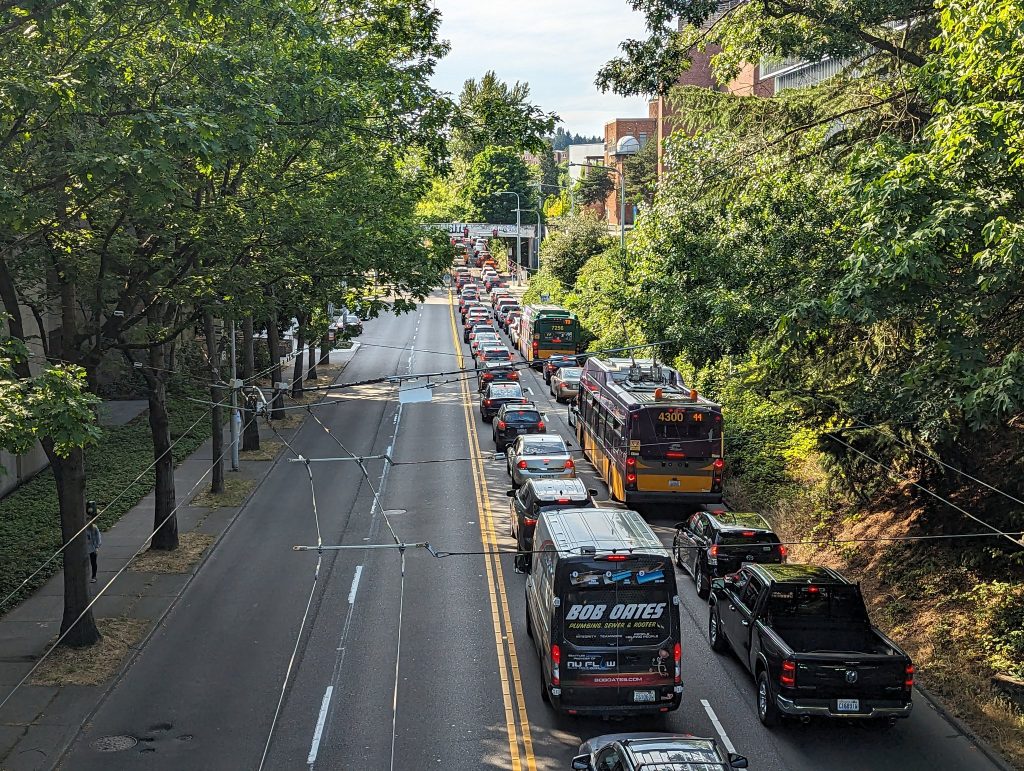
With the direct I-5 to SR 520 transit connection not on the way anytime soon, more work will be needed to ensure transit riders are prioritized through the next major phase of the SR 520 bridge replacement project. Transportation agencies must ensure that the generational investments being made right now around Montlake and Roanoke don’t become short-term impediments to making transit the easy and obvious choice.
Correction: An earlier version of this article mistakenly stated SDOT added bus lanes on University Way NE. This has been corrected to NE Campus Parkway.
Ryan Packer has been writing for The Urbanist since 2015, and currently reports full-time as Contributing Editor. Their beats are transportation, land use, public space, traffic safety, and obscure community meetings. Packer has also reported for other regional outlets including BikePortland, Seattle Met, and PubliCola. They live in the Capitol Hill neighborhood of Seattle.

